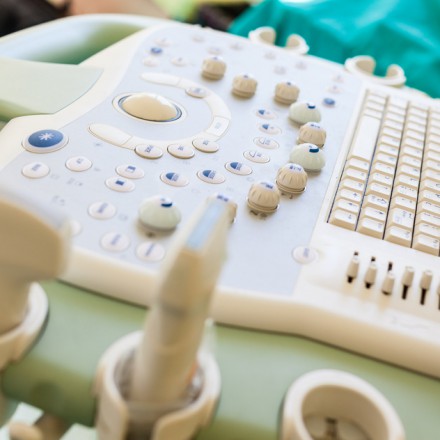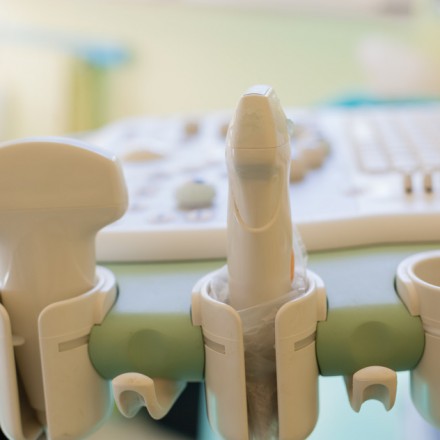A vascular ultrasound is a noninvasive ultrasound method (also called a duplex study) used to examine the circulation in the blood vessels of the body.
Vascular ultrasound can be used to evaluate arteries or veins in nearly any part of the body, including blood vessels in the neck, abdomen, arms and legs. Non- invasive means the procedure does not require the use of needles or anesthesia. Unlike other imaging tests, ultrasound does not require radiation or contrast dye.
During a vascular ultrasound study, sound waves are transmitted through the tissues of the area being examined. These sound waves reflect off of blood cells moving within the blood vessels, and return to the ultrasound machine. The sound waves are recorded and displayed on a computer screen to make an image of the blood vessel. The speed of the sound waves returning to the ultrasound machine allow for calculation of the speed of blood flow in the vessel. When the speed of blood flow in a blood vessel is too fast, this indicates a narrowing (blockage).
We use the vascular ultrasound for: Evaluation of blood flow in the arteries and veins of the body to detect the presence, severity and specific location of disease. We can diagnose narrowing of arteries and determine the severity of narrowing. We can also use vascular ultrasound to diagnose blood clots in the veins of the arms and legs, a condition known as deep vein thrombosis or DVT.
The vascular ultrasound is a great test because: it is non-invasive and does not require exposure to radiation or contrast dye, which can damage the kidneys. It is also a terrific test because it is one of the few that gives physiological information about blood flow in the arteries and veins. Ultrasound is also highly portable compared to other types of vascular imaging (such as CAT scans or MRI).
New technology is allowing us to use vascular ultrasound for: assessment of vascular disease in the abdomen (such as kidney arteries, abdominal aortic aneurysms). Vascular ultrasound is also the most commonly used test to follow-up patients after they have undergone a vascular procedure such as a bypass graft or stent.
Information Courtesy of Cleveland Clinic

Carotid Ultrasound
Carotid ultrasound can assess the development of plaque in the arteries. A carotid ultrasound is simply performed. It is a non-invasive test using sound waves to assess the size and caliber of the carotid and...

Abdominal Vascular Ultrasound
An abdominal vascular ultrasound is recommended for patients with a family history of aortic aneurysms, those who have a smoking history or have been diagnosed with coronary artery disease. Abdominal vascular ultrasound is performed to...

Peripheral Arterial Studies
A peripheral arterial study is an ultrasound study assessing the flow of blood into your legs and is very accurate in determining the amount of blood flow to your legs. Peripheral arterial disease is a...

Peripheral Venous Studies
A peripheral venous study is usually done to diagnose a blood clot in the veins. A peripheral venous study is an ultrasound study of the venous system of the legs or arms. It is usually...
